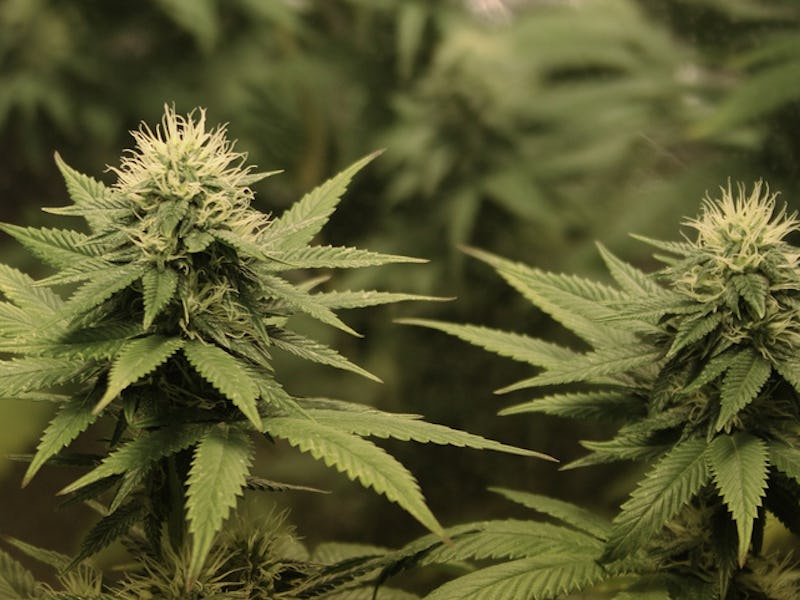You probably know the smell — sweet, pungent, perhaps even a little skunky. Discerning cannabis connoisseurs prize the unique flavors and aromas of the plant’s smoke and vapor, associating a stronger smell with higher quality and greater potency. And while this is basically true, it only gets at one piece of the puzzle. This week, scientists in Vancouver took cannabis appreciation and understanding a couple steps further as they documented some of the plant genetics associated with the individual chemicals that produce particular aromas.
In a study published Wednesday in the journal PLOS One, University of British Columbia researchers Judith Booth, Jonathan Page, and Joerg Bohlmann described the genes in cannabis that are associated with the plant’s different aroma-producing compounds, called terpenes. Terpene-rich resin is produced by the female cannabis plant’s glandular trichomes — the sticky little hairs that give potent buds their characteristic crystallized look. Trichomes cover the buds — or flowering tops, as they’re more formally known — of female plants.
In this study, the researchers used pentane and isobutyl benzene to extract the resin from Cannabis sativa buds. Then they used gas chromatography to identify the individual terpene compounds in the resin extract. Once they figured out which terpenes were in the buds, they sequenced the plants’ DNA to establish which genes are responsible for which compounds.
This image shows some of the most abundant terpenes the scientists found in their study:
Cannabis resin components: monoterpenes (top row), sesquiterpenes (middle row), and cannabinoids (bottom row). GBGA = cannabigerolic acid; THCA = tetrahydrocannabinolic acid; CBDA = cannabidiolic acid
The scientists were able to establish the genetic basis of all the terpenes they found in the cannabis flowers, which should give scientific-minded breeders some more precise information to work with as they create and optimize cultivated varieties. After all, terpenes are crucial to the signature flavors and smells of marijuana.
“The fact that terpenes have persisted throughout domestication as a substantial and diverse component of cannabis resin highlights their significance for human preferences,” write the authors.
Since marijuana has been bred and domesticated so extensively and for such a long time, scientists don’t have a great idea of what early trichomes and resin were like. As a result, they don’t really know what ancestral, evolutionary purpose these compounds served. In modern marijuana breeding, terpenes are important to growers trying to breed varieties of marijuana that are both unique and reproducible. The researchers hope that this research will help give us a better idea of exactly what genetic qualities breeders should look for when crossing different varieties of marijuana. For instance, limonene produces the lemony aroma of strains like Jack’s Cleaner, while myrcene is responsible for the earthy taste of Purple Kush.
“Knowledge of the genomics and gene functions of terpene biosynthesis may facilitate genetic improvement of cannabis for desirable terpene profiles,” write the authors.
These days, it’s pretty easy to find potent weed, and most of it carries an equally strong odor. When cannabis was more illegal than it is now, breeders usually selected for high THC and CBD content — the main active compounds in cannabis — and didn’t pay too much attention to other qualities. But these days, cannabis appreciation is approaching the snobbery levels enjoyed by wine and whiskey tasting. As the growing legalization and decriminalization movements gain ground, breeders and growers are breeding cannabis for more qualities than just potency. In the near future, we’ll surely see an increase in flowery, snobby cannabis reviews, and we’ll have science to thank for this newfound appreciation.
